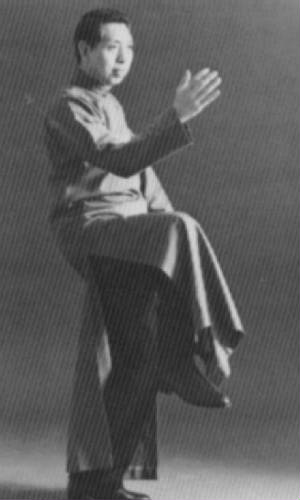First, Everything: remember that the wu/hao form is a modification of Chen Xiaojia, not the Yang Chengfu form. It is said that Sun Lutang also had the Yang style in mind when modifying the Wu/Hao form. There can be some truth to this. All those "masters" of old, they all knew each other...
everything wrote:I've heard of all of those except the wrist release. What I also wonder about is what happened to this hook shape in single whip in the Wu Hao and Sun styles.
Wu/Hao is exceptionally focused on a very basic idea of structure. Here, you keep the angles of the arms intact as much as you can and It has the hand connected to each other, facing each other, almost all of the time, just like you had a taiji ruler in your hands. My peronal opinion is that the crane's beak was taken away and the posture a bit differently interpreted so you preserve this idea better. This idea of structure followed to Sun Lutang, but today it has become almost lost in Sun style. But of course, "relaxing" seems to be the most important in the taiji world today.
Also why is Sun looking at his right hand in photos of the posture where Yang Cheng Fu looks at his left hand.
You change from to the right to the left just as in yang style. In yang style, when you form the beak and change your weight, you focus on the right side. When you finish the move, you look to the left. The interpretation of the movement is different, and also the focus on directions. But the movements of the different styles are not as different as they seem. Look at the other Wu style ("Leaning" Wu), where you 'sit' down in the single whip posture. This style shows a movement that represents something just in between the Yang and Hao/Sun styles. From one interpretation to another, there are only small adjustments which could look like virtuallly greater differencies then they really are.
There is also other aspects. Some teachers will show and hide different applications. Often, they will not show to much of what they are really good at. They need to hide their strength. On the other hand they might show to much of other aspects, which they did not find important, but others regarded as aspects. Sun Lutang was a qinna expert, so he I think he needed to make sure his qinna adjustments and additions to the form was not virtually to evident. Even if he was inspired by Yang style, I don't think he would add a hook or crane's beak to the single whip. It would be too obvious. But yet, his qinna is quite obvious in the Sun form. Look at the Sun ending, it is the most complex of all of the taiji-ending movements.




